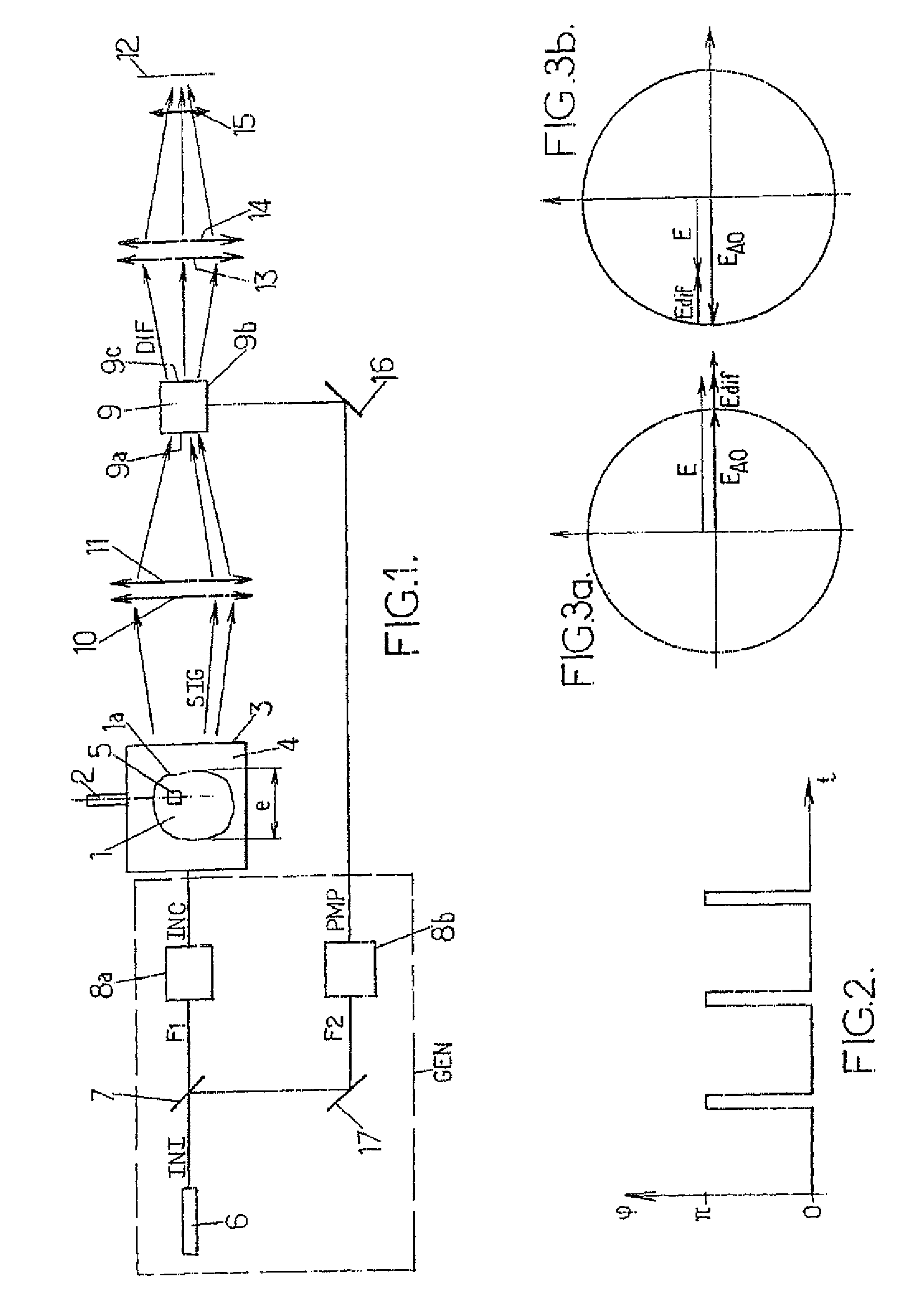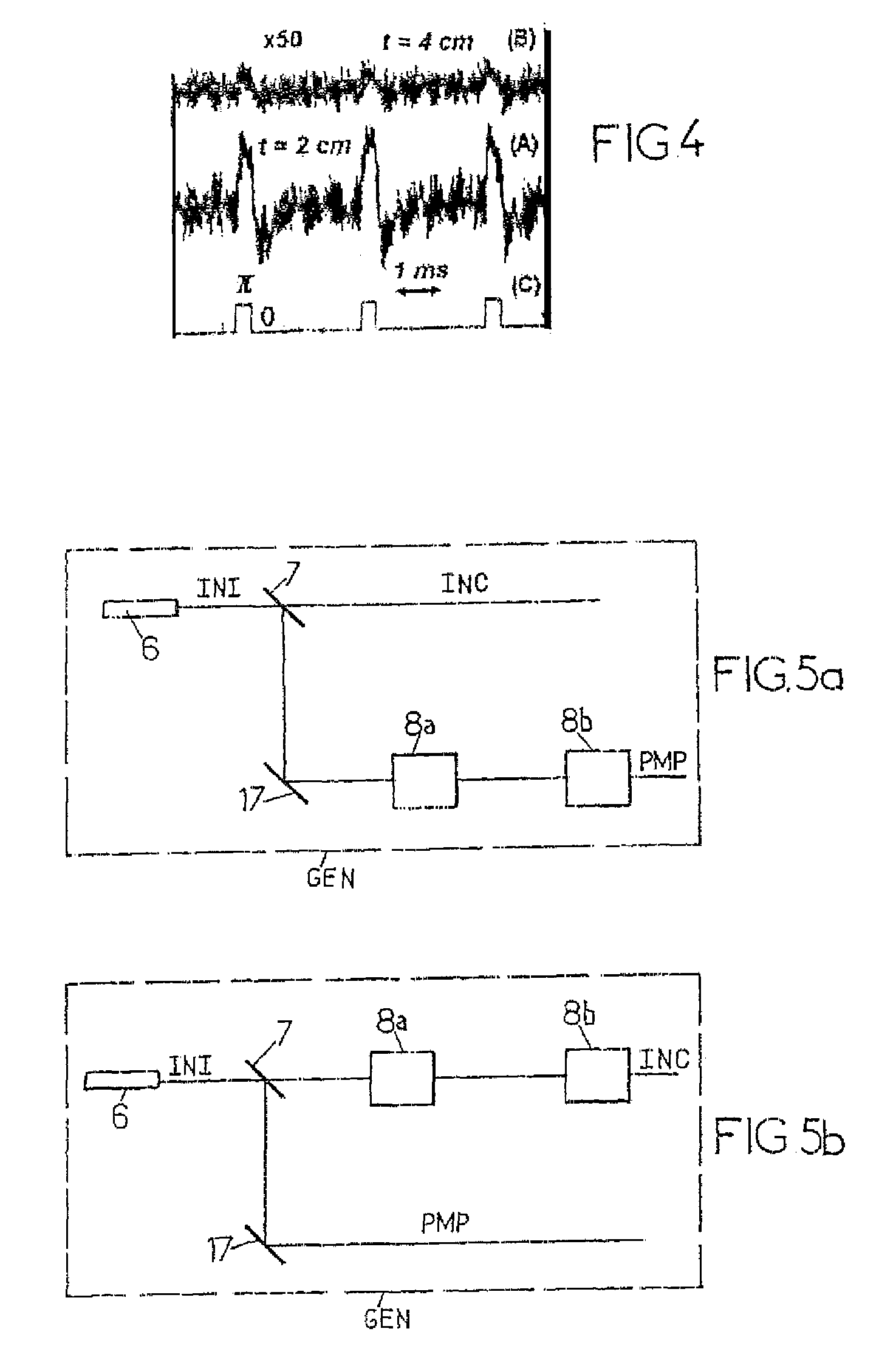Method and installation for acousto-optic imaging
a technology of optical imaging and installation method, applied in the field of acoustical imaging methods and installations, can solve the problems of poor sensibility of the technique, loss of most of the signal, and camera too slow to detect interference signals
- Summary
- Abstract
- Description
- Claims
- Application Information
AI Technical Summary
Benefits of technology
Problems solved by technology
Method used
Image
Examples
Embodiment Construction
[0072]FIG. 1 diagrammatically represents an acousto-optic imaging installation that can be used in the context of the invention.
[0073]There is an object 1 to be imaged using said installation. This object is a scattering medium, typically of a thickness e of a few centimeters and can, for example, be a biological tissue, such as a part of the human or animal body, or other.
[0074]A piezo-electric transducer 2 is in acoustic contact with the object 1, either directly in contact or, for example, acoustically coupled to the object 1 by the immersion of the latter in a tank 3 filled with water 4. For example, a Panametrics piezo-electric transducer of diameter 37 mm with a spherical output face of radius 75 mm is used. The transducer vibrates the area of the object that is in line with it, and in particular the area 5 at the ultrasound acoustic frequency fa, such as for example 2 MHz. The piezo-electric transducer 2 is placed facing a given position of the surface of the object. The piez...
PUM
| Property | Measurement | Unit |
|---|---|---|
| radius | aaaaa | aaaaa |
| power | aaaaa | aaaaa |
| wavelength | aaaaa | aaaaa |
Abstract
Description
Claims
Application Information
 Login to View More
Login to View More - R&D
- Intellectual Property
- Life Sciences
- Materials
- Tech Scout
- Unparalleled Data Quality
- Higher Quality Content
- 60% Fewer Hallucinations
Browse by: Latest US Patents, China's latest patents, Technical Efficacy Thesaurus, Application Domain, Technology Topic, Popular Technical Reports.
© 2025 PatSnap. All rights reserved.Legal|Privacy policy|Modern Slavery Act Transparency Statement|Sitemap|About US| Contact US: help@patsnap.com



